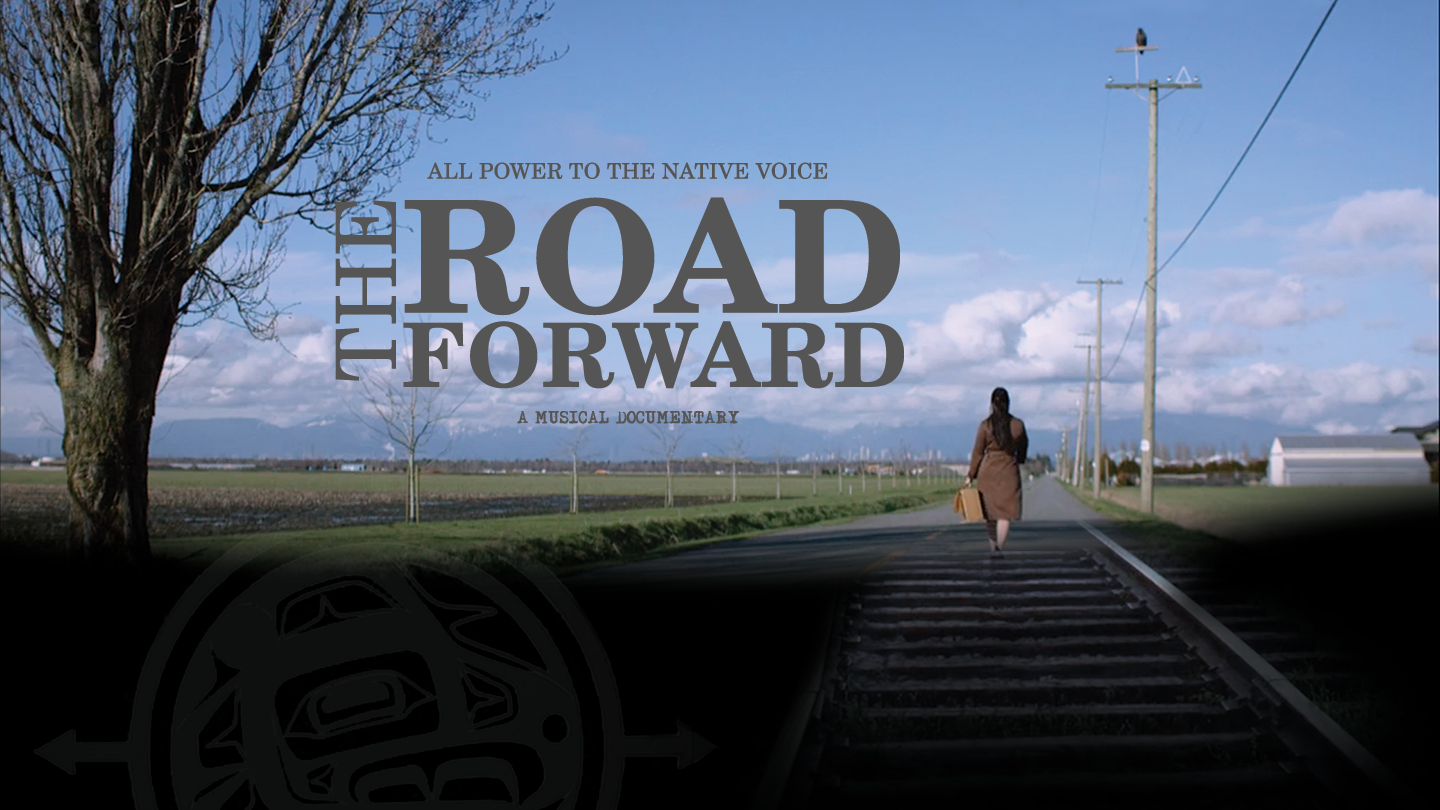When I think of a documentary, my mind immediately prepares to be informed and switches to sponge mode. I’m about to learn something new and usually brace myself for impact. However, when I had the opportunity to watch the NFB production of The Road Forward, I was mystified and jaw struck. The Road Forward is a musical documentary that showcases First Nations performers in an ensemble that is pure magical. Most of the songs in the film are performed by female Aboriginal women whose voices are reminiscent of song birds.
The songs featured in The Road Forward tell stories from their history as well as neglect, poverty and discrimination. They convey deep emotional scars that command your conscience to be called upon and your opinions of authority to be questioned. The last song at the end of the production is a collaboration between male and female performers. They sing about the plight of injustice regarding the victims on the Highway Of Tears. I must confess, the song pulled at my heartstrings which reverberated up to my tear ducks. Emotionally gripping doesn’t begin to describe the resounding message of distress, frustration, sorrow and heartache. As a self- proclaimed humanitarian, every one of my moral fibers were awakened.
Certainly, this film is one that stands out from other NFB productions. I was extremely fascinated by how this very unique documentary was pieced together with seamless poetry in motion performances and spellbinding storytelling. NFB’s publicist Katja De Bock was vital in scheduling a meeting between the executive producer Shirley Vercruysse and I.
“How and when did you first become involved in this musical documentary?”
“I joined the team at NFB a couple of years ago. Once there I was introduced to writer/director Marie Clements. She ran some ideas by me that she had for new projects. When she began to describe a documentary with musical performances, I was immediately interested. Marie had been involved in the Cultural Olympiad back in 2010 and later began to collaborate with songwriters Jennifer Kreisberg and Michelle St. John. A group of them began working together to write other songs and eventually composed them. They formed what was produced as a workshop in 2013 for the PuSh Festival. It had received great reviews and people really enjoyed the music and songs. They then refined the songs and in 2015, a stage version was mounted again at the PuSh Festival.”
Prior to joining the NFB in February 2014, Shirley was an independent film and television producer based in Calgary, Alberta. Her feature credits include Waydowntown, A Problem with Fear, Comeback Season, Radiant City, Angels Crest, The Future Is Now! and Fubar II. Marie Clements was an acclaimed theatre Director prior to directing The Road Forward.
“Can you tell me about your role in the making of The Road Forward and what it took to create?”
“In meetings with Marie, I would supply options as far as editors, DOP and production designer. Marie would interview them and narrow the list down from there in order to create her team. She brought along her own costume designer. This was a large team effort and Marie Clements was careful in picking the right people for the positions. We had a terrific production manager working with us. This film was inspired by the play created by Marie. We started working on the development of the film in Feb. of 2014 and finished in the fall of 2016. The first thing we discussed was how to go about transforming it from a stage performance to a film production. Once that was accomplished, we began the process of interviewing the elders, the documentary subjects and the rest of the ensemble in the summer of 2015. We recorded all the music in the fall of 2015. In Feb of 2016 we filmed all the story songs. We finished the edit throughout the course of the summer of 2016. The film was completed by Dec. of 2016.”
Shirley explains that the NFB’s role in creating this production is “always to promote issues that have a social impact and inspire.” They always look at who their audience is. This particular audience would include First Nations people and the film will inspire them with the acts of the artists, by the acts of the people that have come before them and the young people moving forward.
“What locations were used in the filming?”
“We filmed in Langley, West Vancouver, Prince George and the Highway Of Tears. Jennifer Kreisberg lives in Connecticut, Michelle St. John and Cheri Maracle live in Toronto and had to be flown in. All of the performers were previously involved before the film but all the elders and documentary subjects were brought in once production started.”
The film is being shown at Vancity theatre starting July 14th and running till July 20th. From there it will be partnered up with the Wide Awake Tour. The NFB has put together an Indigenous collection that will be shown to communities throughout the country this summer. It was recently shown in Fort York on Aboriginal Day on an outdoor screen. It will also tour to select community events. If people want to see it, the NFB will provide it. It is slated for the Film Festivals later this Fall.
Only after that, will it either go directly to TV or the NFB website, adds Shirley.
The Road Forward also discusses in great depth, the newspaper called, The Native Voice. It is no longer in circulation but it acted as a platform for First Nations People to voice opinions and concerns, to make announcements regarding the welfare and state of its Aboriginal communities.
Jenn Strom was a true magician in charge of editing this masterpiece. The very gifted Composer was Wayne Lavallee and extremely talented DOP was Mike McKinlay. The incredible task of organizing the production fell in the very capable hands of Production designer, James Boatman.
“This film is really at the core of what NFB is and I consider myself very privileged to have been involved with the project and truly consider it a gift. It’s powerful and positive.”
Shirley concludes that its sometimes hard to cut through all the negative that is out there, but this film makes you feel GOOD.
This musical documentary was financed solely through NFB for under 1 million. The song at the end of the film was shot at the Brian Adams recording studio in Gastown. The song stands as an emotional reminder of the victims that continue to remain uninvestigated along the Highway Of Tears. For more information about the Wide Awake tour please visit http://mediaspace.nfb.ca/epk/aabiziingwashi-wide-awake/
Please go see this film and thank me later.

